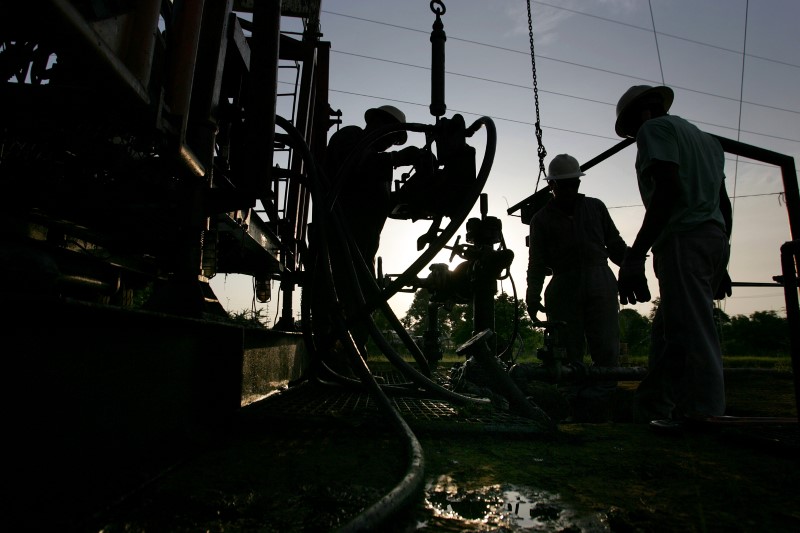* Saudis say will only freeze output if Iran participates
* Iran has so far dismissed output restraint
* U.S. rig count falls further, but output remains
stubbornly high
* Asia's economies still face growth problems - HSBC
(Adds Goldman U.S. production estimates, updates prices)
By Henning Gloystein
SINGAPORE, April 4 (Reuters) - Oil prices fell in early
trading on Monday as the chances of Middle East producers
agreeing to curb overproduction appeared to fade, while U.S.
output remains stubbornly high.
Front month U.S. West Texas Intermediate (WTI) crude futures
CLc1 were trading at $36.38 per barrel at 0302 GMT, down 1.1
percent or 41 cents cents from their last settlement.
International Brent futures LCOc1 were down 0.9 percent or
34 cents at $38.33 a barrel.
The falls extended a 4 percent tumble on Friday when Saudi
Arabia said it would only participate in a global freeze of its
output if its rival Iran also took part, something Tehran has so
far dismissed.
Adding to concerns of a global glut which has pulled down
prices by as much as 70 percent since 2014, U.S. production has
remained high despite steep cuts in drilling for new reserves as
well as a jump in bankruptcies.
"The U.S. oil rig count dropped further this week, with a
total 10 rigs idled," Goldman Sachs (NYSE:GS) said.
"The current rig count implies U.S. production... would
decrease by 705,000 barrels per day yoy (year-on-year) on
average in 2016, and by 375,000 barrels per day yoy in 2017," it
added.
So far, U.S. production remains stubbornly high, at over 9
million barrels per day, as operators keep their oil wells
gushing in a struggle to service debt and stay alive.
Reflecting a spreading belief that crude prices might not
recover by much any time soon, hedge funds have cut their net
long postitions which would benefit from further price rises in
WTI futures for the first time in six weeks.
Despite a pick-up in recent economic data, analysts also
poured cold water on recent hopes that Asia's economic prospects
were improving, which could support oil demand and prices.
"Some data has started to perk up, notably China's
manufacturing PMIs for March. Across Asia, exports, production
and even consumer spending should also show a bit more swing in
the coming months," said HSBC's Frederic Neumann on Monday.
"Still, fundamentally, have things really improved? No. It's
mostly that a more dovish Fed and a weaker dollar have put a
temporary gloss on things. Asia continues to face a structural
growth problem - one that will not be cured in the space of a
few, short months," he added.
